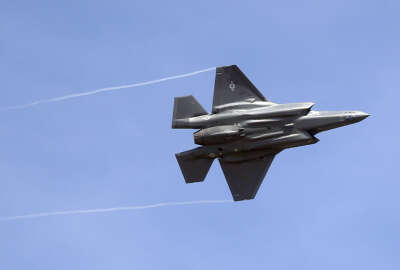
Unresolved IG recommendations piling up at DoD
The number of open recommendations that are at least five years old grew from 80 in 2019 to 170 this year.
When the Pentagon’s inspector general makes recommendations to DoD officials as part of its audit and oversight work, the department’s leadership usually agrees with them. Whether or not they’re actually implemented is another matter.
It’s increasingly the case that they’re not — at least not in a timely fashion, according to statistics the IG published as part of its annual compendium of open recommendations. Perhaps most notably, the number of open recommendations that have been awaiting attention for at least five years more than doubled between 2019 and 2020: from 80 to 170.
“Within the first two years of us issuing a recommendation, the department has actually done a good job of implementing the recommendation. But after the two year mark, the progress does slow. And the number of aged recommendations that are over five years old is growing at an increasing pace,” Troy Meyer, the principal assistant inspector general for audit said in an interview for Federal News Network’s On DoD. “And that 170 number has tripled since we first started tracking recommendations over five years old in 2018. So that tells us more attention needs to be paid on the part of the department on those older recommendations.”
The overall number of open recommendations grew as well, from 1,581 last year to 1,602 this year. So did the recommendations the OIG has designated as “high priority,” from 30 in 2019 to 35 in 2020. And 21 recommendations that were on the high priority list last year are still unresolved.
For example, three of the high priority open recommendations are meant to protect DoD from price gouging by sole-source spare parts suppliers, an issue the OIG brought to light most recently in a 2019 report on the department’s overpayments to TransDigm group. Four others deal with ongoing issues related to how Lockheed Martin manages and tracks government-owned property in the F-35 program.
“We believe these are the recommendations that the department should focus on because of life and safety issues, or potential savings to the department,” Meyer said. “Just to give you another example, we did an audit in 2014 on billings and collection of funds for medical and dental services at military treatment facilities, and we identified over $73 million in charges that were more than 180 days old, that were delinquent and needed to be transferred to the Department of Treasury for collection. But the internal control deficiencies that we identified will continue and this number could grow if they’re not fixed.”
As part of the compendium, the OIG also tallies how much money DoD could be saving if it implemented all of the open recommendations. Last year, that figure was $4.8 billion. This year, it’s $6.5 billion.
To highlight the open recommendations — especially the high priority ones — OIG officials meet once per month with the staff of the DoD chief management officer to discuss corrective action plans. In turn, the CMO’s office is supposed to work with DoD components to press them on progress toward those corrective actions.
If that process doesn’t work, federal law also allows the OIG to raise an issue to the deputy secretary of Defense for a final, binding decision on whether the department is going to implement a recommendation or leave it unresolved. But Meyer said that process is rarely used.
“It hasn’t happened. There is a reluctance to raise issues to the deputy secretary, because we try to resolve issues at the lowest possible level,” he said “But they do get raised to various levels within the department up to the chief management officer level, and we do try to resolve a lot of those recommendations at that level.”
Copyright © 2025 Federal News Network. All rights reserved. This website is not intended for users located within the European Economic Area.
Jared Serbu is deputy editor of Federal News Network and reports on the Defense Department’s contracting, legislative, workforce and IT issues.
Follow @jserbuWFED





